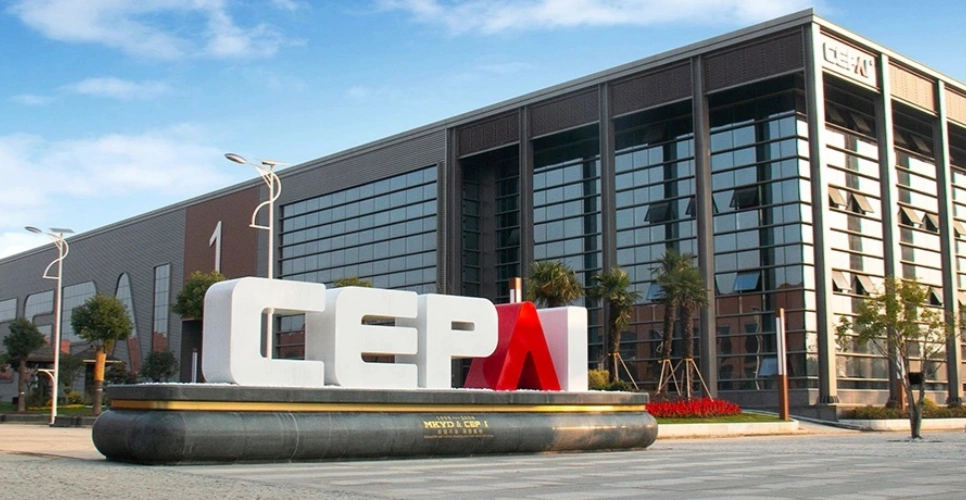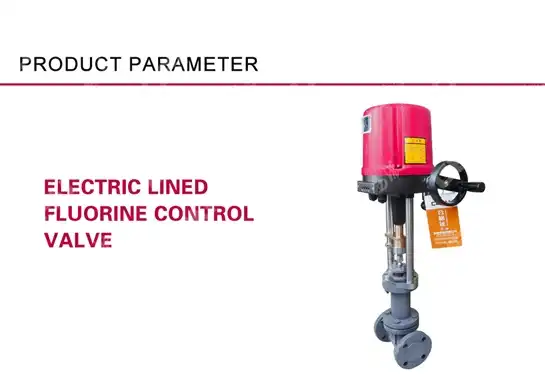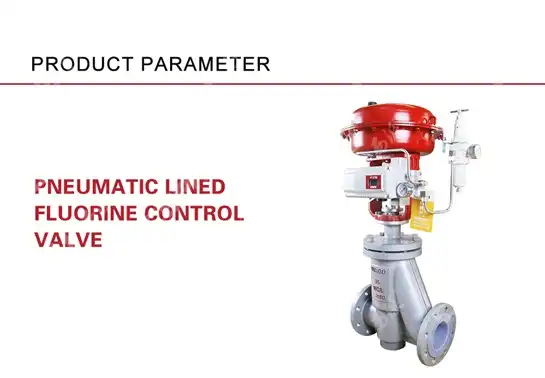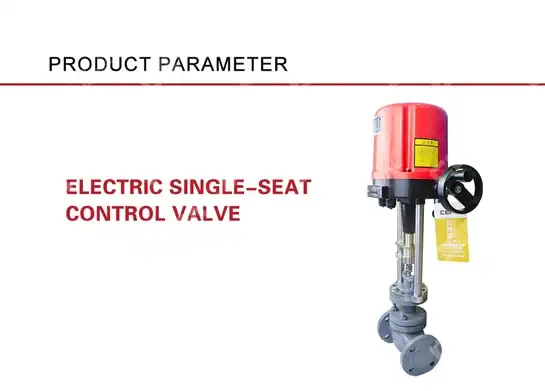How to Select a Low-Temperature Control Valve for Liquid Nitrogen Applications?
Picture this scenario: Your liquid nitrogen system just failed during a critical cryogenic process, causing thousands of dollars in product loss and safety concerns for your team. The culprit? An improperly selected Low-Temperature Control Valve that couldn't handle the extreme conditions of -196°C operations. Selecting the right Low-Temperature Control Valve for liquid nitrogen applications isn't just about performance—it's about preventing catastrophic failures that can shut down entire production lines and compromise worker safety.
Understanding Low-Temperature Control Valve Requirements for Cryogenic Applications
-
Material Selection and Construction Standards
When dealing with liquid nitrogen at temperatures reaching -196°C, the selection of appropriate materials becomes critical for Low-Temperature Control Valve performance. Many commonly used elastomers have a glass transition temperature in the range of -40 to -60 C, when they become hard and brittle, making standard valve components unsuitable for cryogenic service. The valve body materials must maintain their mechanical properties and structural integrity under extreme thermal stress. Stainless steel grades such as 316L and 304 are commonly specified for Low-Temperature Control Valve construction, as these austenitic steels retain their ductility at cryogenic temperatures. Carbon steel, while cost-effective for ambient applications, becomes brittle and prone to failure when exposed to liquid nitrogen temperatures. The extended bonnet design is essential for Low-Temperature Control Valve applications in liquid nitrogen service. This configuration positions the packing and actuator components away from the cryogenic medium, preventing thermal damage to critical sealing elements. CEPAI's Low-Temperature Control Valve features an extended type valve cover designed specifically for operating temperatures ranging from -40°C to -196°C, ensuring reliable operation across the full cryogenic spectrum. The bolt pressing type gland form provides secure compression of the flexible graphite and PTFE packing materials, which maintain their sealing properties even under extreme temperature variations.

-
Thermal Considerations and Insulation Requirements
Thermal management represents one of the most challenging aspects of Low-Temperature Control Valve design for liquid nitrogen applications. The extreme temperature differential between the cryogenic medium and ambient conditions creates significant thermal stresses that can lead to valve distortion and seal failure. Proper insulation and thermal barriers are essential to prevent ice formation and maintain consistent valve operation. The valve stem extension must be carefully calculated to ensure that the actuator and control components remain at manageable temperatures while providing adequate stroke length for flow control. Heat transfer through the valve body and stem can cause liquid nitrogen to vaporize prematurely, leading to two-phase flow conditions that complicate control performance. CEPAI's Low-Temperature Control Valve incorporates advanced thermal isolation features that minimize heat ingress while maintaining precise flow control. The pressure balance spool design helps compensate for the thermal effects on valve performance, ensuring stable operation even under varying process conditions. Additionally, the straight cage type design provides excellent flow characteristics while minimizing pressure drop across the valve, reducing the potential for cavitation in liquid nitrogen service.
Key Performance Parameters for Liquid Nitrogen Service
-
Flow Characteristics and Sizing Considerations
Proper sizing of a Low-Temperature Control Valve for liquid nitrogen applications requires careful consideration of the unique properties of cryogenic fluids. Liquid nitrogen has a density approximately 0.8 times that of water, but its low viscosity and high vapor pressure create unique flow dynamics that affect valve sizing calculations. The equal percentage and linear flow characteristics available in CEPAI's Low-Temperature Control Valve designs provide flexibility to match specific process requirements. Equal percentage characteristics are particularly beneficial for liquid nitrogen applications where wide rangeability is required, as they provide better control stability at low flow rates. The pressure balance spool design incorporated in quality Low-Temperature Control Valve construction helps maintain consistent flow characteristics across varying pressure differentials. This is particularly important in liquid nitrogen systems where pressure variations can occur due to thermal effects and phase transitions. The valve's nominal diameter range from DN15-400mm accommodates everything from small laboratory applications to large industrial liquid nitrogen distribution systems. The pressure ratings of PN16, 40, and 64, along with ANSI 150, 300, and 600 classes, ensure compatibility with various system pressure requirements commonly encountered in cryogenic applications.
-
Control Signal Integration and Automation
Modern liquid nitrogen processes require precise automated control, making the integration capabilities of the Low-Temperature Control Valve critical for system performance. CEPAI's electric actuator design provides reliable operation with standard 220V or 380V power supplies, accommodating most industrial electrical systems. The 4-20mADC control signal input allows seamless integration with distributed control systems (DCS) and programmable logic controllers (PLC), enabling sophisticated process control strategies for liquid nitrogen handling systems. The ambient temperature rating of -30 to +70°C for the actuator ensures reliable operation in various installation environments, from outdoor liquid nitrogen storage facilities to climate-controlled laboratory settings. Optional position feedback signals provide closed-loop control capability, essential for maintaining precise flow control in critical applications such as cryopreservation systems or semiconductor manufacturing processes. The availability of accessories including limit switches, solenoid valves, and valve position transmitters enables comprehensive integration with safety and monitoring systems required for liquid nitrogen handling.
Safety and Compliance Requirements
-
Industry Standards and Certification Requirements
Safety compliance is paramount when selecting Low-Temperature Control Valve equipment for liquid nitrogen applications due to the inherent risks associated with cryogenic fluids. This low temperature (below -320°F) requires the use of certain valve and specialized safety considerations that go beyond standard industrial valve applications. CEPAI's comprehensive certification portfolio, including ANSI B16.104 Level IV and VI compliance for metal and non-metallic valve seats respectively, ensures that the Low-Temperature Control Valve meets rigorous leakage standards essential for cryogenic service. The company's ISO 45001 Occupational Health and Safety System certification demonstrates commitment to workplace safety, particularly important when handling hazardous cryogenic materials. CE certification ensures compliance with European safety standards, while the various SIL (Safety Integrity Level) certifications for butterfly, ball, and control valves indicate the reliability levels required for safety-critical applications. These certifications are not merely regulatory compliance measures but represent comprehensive testing and validation processes that ensure the Low-Temperature Control Valve will perform safely under the extreme conditions encountered in liquid nitrogen service.
-
Emergency Response and Fail-Safe Design
Emergency shut-off capabilities are essential safety features for Low-Temperature Control Valve installations in liquid nitrogen systems. The potential for rapid phase change and pressure buildup in cryogenic systems requires fail-safe valve designs that can quickly isolate flow in emergency situations. CEPAI's Low-Temperature Control Valve designs incorporate fail-safe actuator options that automatically move to a predetermined safe position upon power loss or control signal failure, preventing uncontrolled liquid nitrogen release. The availability of emergency cut-off valve options in the product line provides additional safety layers for critical applications. Integration with fire and gas detection systems enables automatic valve closure in response to emergency conditions, protecting personnel and equipment from cryogenic hazards. The robust construction and proven reliability of these Low-Temperature Control Valve systems provide the confidence needed for installation in safety-critical liquid nitrogen applications where failure could result in significant consequences.
Application-Specific Selection Criteria
-
Industrial Process Requirements
Different industrial applications place varying demands on Low-Temperature Control Valve performance in liquid nitrogen service. Many industries use liquid nitrogen lines. Among them are food and beverage processing, pharmaceutical manufacturing, biobanking, laboratory research, and medical facilities. Each application requires specific performance characteristics and regulatory compliance standards. Food processing applications require sanitary design features and FDA-compliant materials, while pharmaceutical applications demand validation documentation and cleanroom compatibility. Semiconductor manufacturing processes using liquid nitrogen for wafer cooling require extremely precise temperature control and contamination-free operation. The Low-Temperature Control Valve selection must consider particle generation, outgassing characteristics, and compatibility with ultra-high purity nitrogen systems. Laboratory applications often require smaller valve sizes with high precision control capabilities, while industrial liquid nitrogen distribution systems prioritize reliability and low maintenance requirements. CEPAI's comprehensive product range and customization capabilities enable optimal Low-Temperature Control Valve selection for each specific application requirement.

-
Maintenance and Serviceability Considerations
Long-term reliability and ease of maintenance are critical factors in Low-Temperature Control Valve selection for liquid nitrogen applications. The extreme operating conditions place additional stress on valve components, making routine maintenance and service accessibility important considerations. CEPAI's design philosophy emphasizes serviceability, with accessible packing arrangements and replaceable trim components that minimize downtime during maintenance operations. The extended bonnet design not only provides thermal protection but also facilitates maintenance access to critical sealing components without complete valve removal from the pipeline. This design feature is particularly valuable in liquid nitrogen systems where valve removal may require complex system shutdown and restart procedures. The use of standard industry materials and component designs ensures that spare parts availability and service support remain viable throughout the valve's operational life. Remote monitoring capabilities available through optional instrumentation enable predictive maintenance strategies that can prevent unexpected failures in critical liquid nitrogen applications.
Conclusion
Selecting the proper Low-Temperature Control Valve for liquid nitrogen applications requires careful consideration of materials, thermal management, safety compliance, and application-specific requirements to ensure reliable cryogenic system operation.
Cooperate with CEPAI Group Co., LTD.
CEPAI Group Co., LTD. stands as your trusted China Low-Temperature Control Valve manufacturer and China Low-Temperature Control Valve supplier, delivering High Quality Low-Temperature Control Valve solutions since 2009. As a leading China Low-Temperature Control Valve factory, we offer comprehensive Low-Temperature Control Valve for sale with competitive Low-Temperature Control Valve price options through our China Low-Temperature Control Valve wholesale programs. Our 156 million yuan intelligent manufacturing investment and Asia-Pacific region's longest high-precision production line ensure exceptional quality and reliability. With API certifications, ISO compliance, and partnerships with PetroChina, Sinopec, and CNOOC, we provide unmatched expertise in cryogenic valve solutions. Contact us at cepai@cepai.com for your liquid nitrogen valve requirements and experience our commitment to quality excellence.
References
1. "Cryogenic Valve Design and Application Guidelines" - American Petroleum Institute Standard API 6A
2. "Materials Selection for Cryogenic Applications" - American Society of Mechanical Engineers, Boiler and Pressure Vessel Code Section VIII
3. "Safety Requirements for Cryogenic Equipment" - Compressed Gas Association Publication CGA G-4.1
4. "Low Temperature Valve Testing Standards" - American National Standards Institute ANSI B16.104
_1745994738000.webp)
Get professional pre-sales technical consultation and valve selection services, customized solution services.

About CEPAI


